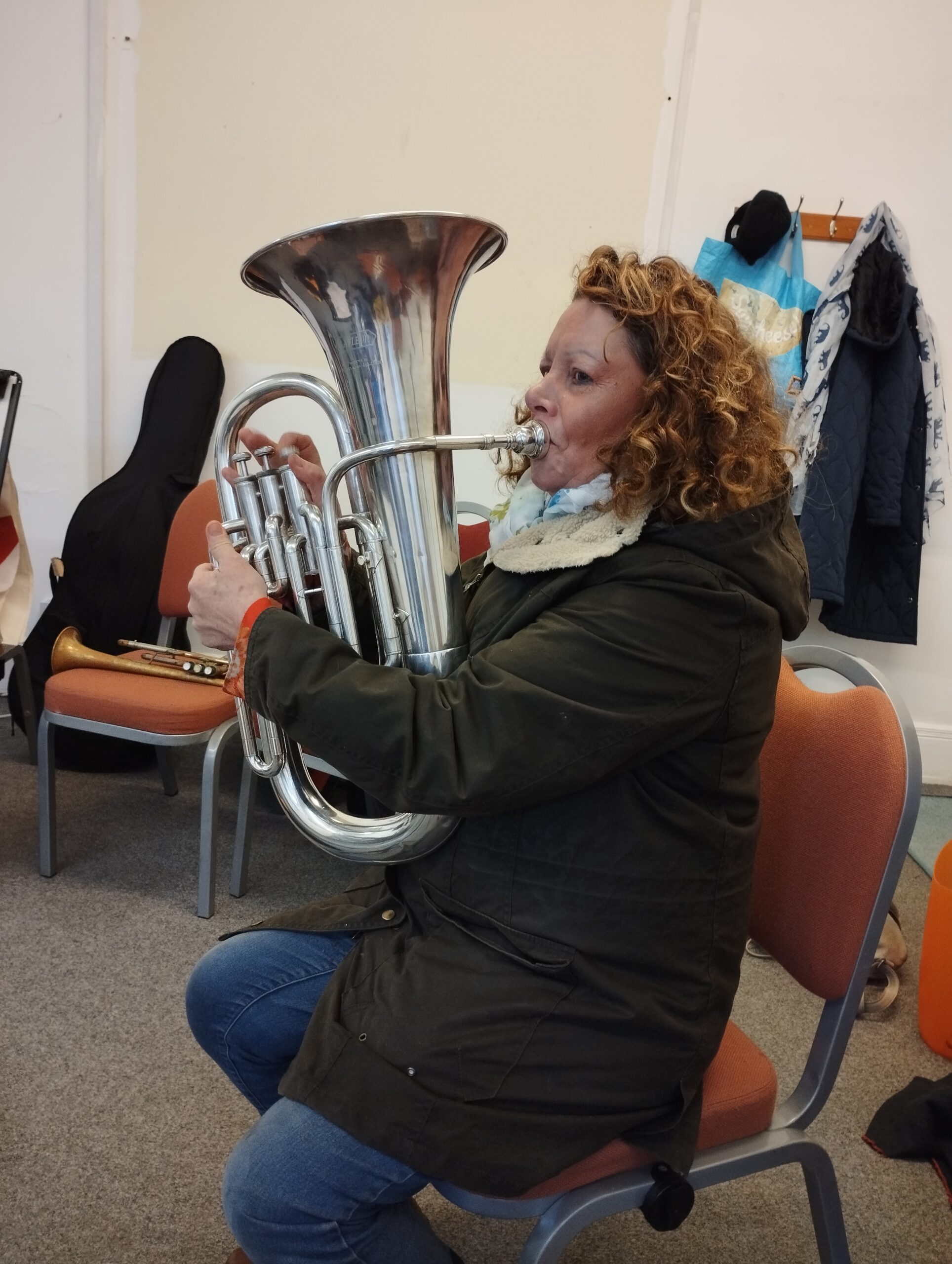
What happens when?
People who have never played music before pick up a bunch of different instruments and ask to learn?
In recent months I’ve been arranging pieces for our group in Penrith: Brass Inc. This is a group of musicians with varying disabilities, including from 4Eden and Team Autism who share an interest in learning a musical instrument, reading music and playing in an ensemble. They have chosen instruments from a range provided by Drum and Brass and our wonderful partner Blue Jam Arts.
What a challenge! There’s no book for this. The ambitious aim of the project is to include everyone in playing ensemble music at their own level. Which is easier said than done, but over the years I’ve worked out a few tips and tricks, which I’d like to share with colleagues, in the hope that they will share theirs with us!
We began by providing them with crib sheets, see one example here.
BASS GUITAR, CELLO, KEYBOARD INSTRUMENTAL-CRIB-SHEETS
The group also includes some experienced brass players. I’m therefore putting the melodies and harmonies into the brass parts and creating simple parts for my new players. This blog tells how I’ve been creating simple parts which enable absolute beginners on keyboard, bass guitar and cello to play a piece using chords or open string parts.
I’m using the free composing tool MuseScore to do this.
You can download MuseScore here.
You can scroll to the end of this blog to listen to the group play Good King Wenceslas after 2 weeks of picking up an instrument. But if you want to know how we did it, read on!
I started by opening a score I already have. Ian Simkin’s simple brass arrangement of “Good King Wenceslas” – no copyright to worry about on this piece of music, whose composer has been dead for more than 75 years.
Then I used MuseScore’s clever tools to add my new instruments: electric piano, bass guitar and ‘cello.
The next bit is the hard work part. Looking at the score and determining simple piano chords and the best notes to play on the open strings of the cello and bass. For purist musicians this is hard. Luckily I’m not a purist. I want people to play, not to produce the finest arrangement in the land.
There are so many ways you can start arrangements: from an open source score (MuseScore has lots), or look for a piece you like that has the chords written out etc.
All of this is available on the Internet of course.
For beginners it’s really important to remember the different keys of the instruments (violins and flutes in C, trumpet, cornet etc in Bb, horns in Eb and F etc).
The aim is to avoid lots of sharps or flats for new players. A chart like this is invaluable :https://www.musicnotes.com/blog/learn-transpose-music/.
When the parts were written I added notes, finger patterns or other instructions to help the players who may not have seen music before. There is a lot to remember for a new player. Where the notes are on the instrument, how to play them, what they sound like, how long to play each note for.
This must be broken down into easily understood chunks, and you need to understand what is easy and what is hard on all of your instruments. I am so glad now that I have tried everything I could get my hands on because I know the beginner challenges!
You can see one of the simple pieces below.
I print out parts for each of the players, making sure that there is a score as well, plus a plan for getting through all the parts without people sitting around and getting bored.
And, with apologies for any errors (do let me know so I can correct them!) that’s an approach to creating parts for beginners. I hope it helps you do do the same!
You can see and hear the arrangement here. And you can hear the ensemble play the piece in the session.
